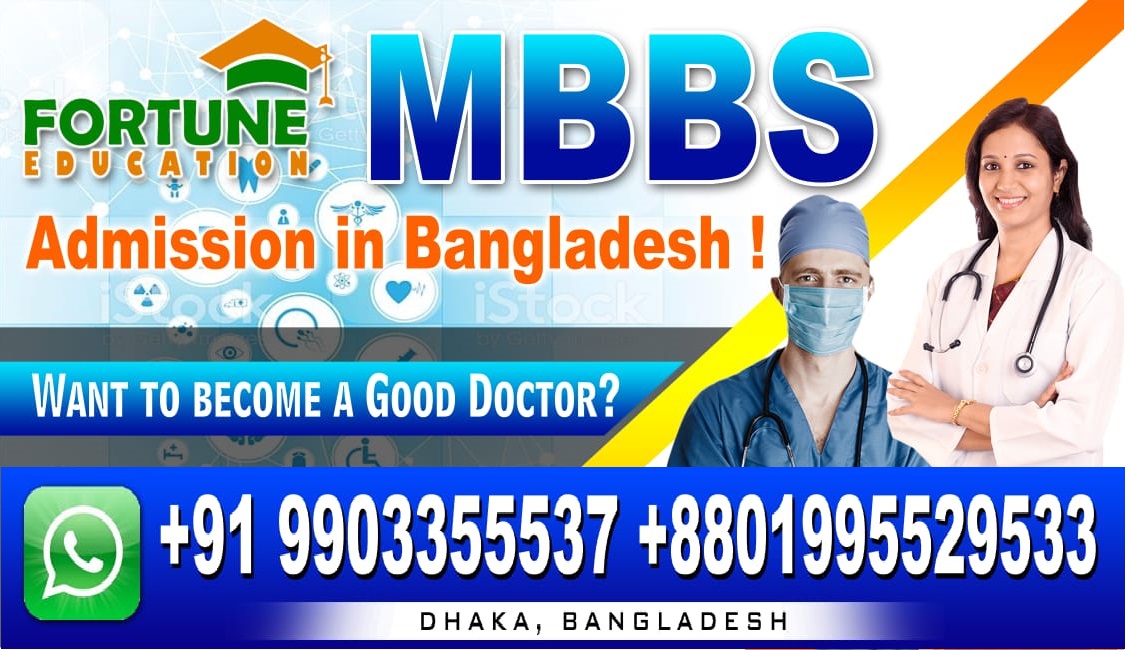The College of Medical Sciences (COMS) located in Bharatpur, Nepal, is a well-regarded institution offering medical education, particularly the MBBS program. It attracts students from Nepal and abroad, including a significant number from India, due to its quality education, modern facilities, and strategic location. Here’s an overview of studying MBBS at COMS in Bharatpur:
College of Medical Sciences Bharatpur
Overview of College of Medical Sciences, Bharatpur
Location: COMS is situated in Bharatpur, the fifth largest city of Nepal, known for its developed infrastructure and accessibility.
Affiliation: The college is affiliated with Kathmandu University, one of Nepal’s premier universities for medical education.
MBBS Program at COMS
Duration: The MBBS program typically spans 5.5 years, which includes a period of intensive internship training.
Curriculum: The curriculum is designed to be comprehensive, blending theoretical knowledge with extensive practical exposure. It aligns with international standards, preparing students for global medical challenges.
Medium of Instruction: English is the medium of instruction, making the program accessible to international students.
Study MBBS in Nepal
Admission Process and Eligibility
Eligibility Criteria: Candidates must have completed their 10+2 or equivalent education with Physics, Chemistry, and Biology. A minimum score threshold, typically around 50%, is often required.
Entrance Exam: Admission to the MBBS program usually requires passing an entrance exam. COMS may conduct its own test or accept scores from standardized exams like NEET (for Indian students).
Documentation: Essential documents for admission typically include academic transcripts, certificates of completion, and proof of passing the entrance exam.
Facilities and Infrastructure
Teaching Hospital: COMS has an associated teaching hospital that provides practical training and exposure to a diverse range of medical conditions.
Laboratories and Libraries: State-of-the-art laboratories and well-stocked libraries support the educational needs of students.
Hostel and Accommodation: The college offers hostel facilities for students, equipped with essential amenities.
Recognition and Accreditation
Nepal Medical Council: COMS is recognized by the Nepal Medical Council, ensuring the validity of its medical degrees in Nepal.
International Recognition: The college’s MBBS program is recognized by various international medical councils, making the degree globally valid.
Career Prospects and Opportunities
Global Practice: Graduates can pursue medical careers globally, subject to passing respective country-specific licensing exams.
Postgraduate Studies: Students can opt for further specialization in Nepal or abroad.
Challenges for International Students
Cultural Adaptation: Adapting to a new cultural and academic environment may be a challenge for some international students.
Climate and Geography: Adjusting to the local climate and geographic conditions can be a part of the initial challenges.
The College of Medical Sciences in Bharatpur offers a conducive environment for studying MBBS, with a blend of quality education, practical training, and modern infrastructure. It is an appealing option for students from Nepal and neighboring countries like India. However, prospective students should conduct thorough research and understand the admission process, fee structure, and living conditions in Bharatpur, Nepal, before making a decision.
Medical Education in Nepal
Medical education in Nepal has gained prominence over the years, attracting not only domestic but also international students, especially from neighboring countries like India. The system is known for its quality education, well-structured programs, and emphasis on practical skills. Here’s an overview of medical education in Nepal:
Structure of Medical Education
Undergraduate Programs: The primary program is the Bachelor of Medicine, Bachelor of Surgery (MBBS). The duration of the MBBS course is typically 5.5 years, including a mandatory internship.
Postgraduate Programs: These include Master of Surgery (MS), Doctor of Medicine (MD), and various specializations. The duration for these courses usually ranges from 3 to 5 years, depending on the specialty.
Nursing and Allied Health Sciences: Apart from MBBS, there are courses in Nursing, Dental Surgery, Pharmacy, Public Health, and other allied health sciences.
MBBS Admission Process
Eligibility Criteria: Students must have completed their higher secondary education (10+2) with Physics, Chemistry, and Biology.
Entrance Exams: For MBBS and other undergraduate courses, students need to clear an entrance exam. Some universities conduct their own exams, while others accept scores from standardized tests like NEET (for Indian students).
Selection Process: Admissions are typically based on performance in the entrance exam, academic scores, and sometimes interviews.
Medical Colleges
Nepal houses several reputed medical colleges, both public and private. They are affiliated with universities like Tribhuvan University, Kathmandu University, and the BP Koirala Institute of Health Sciences.
These colleges are equipped with modern facilities, including laboratories, libraries, and teaching hospitals.
Clinical Training
Clinical training is a significant component of medical education in Nepal, with students gaining hands-on experience in affiliated hospitals.
This training is essential for understanding patient care, medical procedures, and the realities of medical practice.
Recognition and Accreditation
Medical programs are accredited by the Nepal Medical Council (NMC), ensuring adherence to educational standards.
Many Nepalese medical colleges are recognized internationally, allowing graduates to pursue further education or careers abroad.
Challenges
Resource Limitation: While the education is of good quality, some institutions may face limitations in resources compared to Western standards.
Cultural and Language Barriers: International students may need time to adjust to the local culture and language, although the medium of instruction is English.
Opportunities Post Graduation
Graduates can pursue careers in hospitals, healthcare organizations, or continue their education with postgraduate studies.
There are opportunities for medical research, teaching, and specialization in various fields of medicine.
Medical education in Nepal is a viable option for those seeking quality education at relatively affordable costs. The country’s medical colleges provide comprehensive training, preparing students for careers in various medical fields. Prospective students should consider factors like the college’s reputation, the specifics of the curriculum, living conditions in Nepal, and their career goals when making a decision.
MBBS Admission in Bangladesh
MBBS Admission in Bangladesh | Fortune Education Authorized Consultant of Medical Education
Fortune Education, recognized as an authorized consultant for medical education, often assists students in securing admissions for MBBS programs in Bangladesh. For students, particularly from countries like India, Nepal, and other parts of Asia, Bangladesh has emerged as a preferred destination for medical education due to its quality of education, affordability, and cultural similarities. If you’re considering MBBS admission in Bangladesh through a consultant like Fortune Education, here are some important aspects to keep in mind:
Fortune Education
Services Provided by Fortune Education
Guidance on Selecting Medical Colleges: Assistance in choosing the right medical college in Bangladesh based on the student’s academic profile and preferences.
Admission Process Support: Guidance through the entire admission process, including filling out application forms and preparing the necessary documentation.
Eligibility Check and Evaluation: Evaluating the student’s eligibility for various medical colleges, considering academic records and entrance exam scores (like NEET for Indian students).
Visa Assistance: Providing support in obtaining a student visa for Bangladesh, including guidance on the necessary documentation and the application process.
Pre-departure Briefing: Offering information and advice on living and studying in Bangladesh, including insights into the local culture, lifestyle, and educational environment.
Post-Arrival Assistance: Some consultants also provide support after the student arrives in Bangladesh, helping them settle in and navigate the initial phase of their education journey.
Medical College in Bangladesh
Accreditation: Ensure the medical college is recognized by relevant bodies like the Bangladesh Medical and Dental Council and listed in the World Directory of Medical Schools.
Curriculum and Infrastructure: Understand the curriculum offered and assess the college’s infrastructure, including laboratories, libraries, and clinical training facilities.
Fee Structure: Get a clear understanding of the tuition fees, hostel fees, and other related expenses.
International Student Support: Check for services and support provided to international students, including language assistance, if needed.
Eligibility for MBBS in Bangladesh
Academic Requirements: Generally, a high school education with Physics, Chemistry, and Biology, and a minimum aggregate score as required by the colleges.
Entrance Exam: Some colleges might require scores from medical entrance exams, while others might admit students based on their high school performance.
Application and Admission Process
Application Submission: Submitting applications within the deadlines, along with necessary academic transcripts and other required documents.
Admission Offers: If successful, students will receive an offer letter from the college. It’s important to thoroughly review this offer before accepting it.
Visa Process: After accepting the offer, the next step is to apply for a student visa.
Post-Admission Steps
Accommodation Arrangements: Deciding between on-campus and off-campus living options.
Travel Preparations: Making travel arrangements to Bangladesh.
Things to Consider
Consultant’s Credibility: Verify the credibility and track record of Fortune Education or any other consultant.
Direct College Contact: It’s also advisable to directly contact the medical colleges for information and verification.
Awareness of Rules and Regulations: Understand the legal and medical education framework of Bangladesh.
Engaging with an educational consultant like Fortune Education can streamline the process of securing an MBBS seat in Bangladesh, but it is crucial for students and their guardians to conduct thorough research and exercise due diligence at every step of the process.
Structure of Medical Education
The structure of medical education varies globally, but it generally follows a standardized path, combining theoretical knowledge with practical training. Here’s a general overview of the structure of medical education, keeping in mind that specific details can differ by country:
Undergraduate Education
Bachelor of Medicine, Bachelor of Surgery (MBBS) / Doctor of Medicine (MD):
Duration: Typically 5 to 6 years.
Phases: Divided into pre-clinical, para-clinical, and clinical phases.
Pre-Clinical: Covers basic sciences like Anatomy, Physiology, Biochemistry.
Para-Clinical: Includes Pathology, Microbiology, Pharmacology, Forensic Medicine, and Community Medicine.
Clinical: Focuses on practical training in major medical specialties like Medicine, Surgery, Obstetrics and Gynecology, Pediatrics, Psychiatry, Dermatology, etc.
Internship
Duration: Usually 1 year.
Hands-On Training: Involves rotations through various specialties, giving students direct patient care experience under supervision.
Completion: Often mandatory for obtaining a medical license.
Postgraduate Education
Residency (Specialization Training):
After completing MBBS/MD, doctors can specialize in areas like Internal Medicine, Surgery, Pediatrics, etc.
Duration: Varies by specialty, generally 3 to 7 years.
Involves: Intensive training in the chosen specialty, including both patient care and research.
Fellowship:
For further sub-specialization (e.g., Cardiology, Neurosurgery), a doctor can pursue a fellowship.
Duration: Usually 1 to 3 years.
Doctorate Level
Ph.D. in Medical Sciences: Some medical professionals engage in research leading to a Doctor of Philosophy (Ph.D.) in various biomedical fields.
Continuous Medical Education (CME)
Lifelong Learning: Doctors are required to keep updating their knowledge and skills through continuing medical education.
Licensing and Certification
Medical Licensing Examination: Before practicing, medical graduates must pass a licensing examination (e.g., USMLE in the U.S., PLAB in the U.K., FMGE/NExT in India).
Board Certification: Post-residency, doctors may take board certification exams in their specialty.
Other Key Aspects
Research and Electives: Medical education often includes opportunities for research, elective subjects, and internships in various subspecialties.
Global Differences: The structure, terminology, and duration of medical education can vary. For example, in the U.S., medical education typically starts after a 4-year undergraduate degree, leading to an MD program of 4 years, unlike the direct MBBS route common in countries like the U.K., India, and others.
The structure of medical education is designed to comprehensively prepare individuals for a career in medicine, ensuring they possess the necessary knowledge, skills, and ethical grounding to provide high-quality patient care and contribute to the medical field. It’s a rigorous journey that demands dedication, resilience, and continuous learning.



